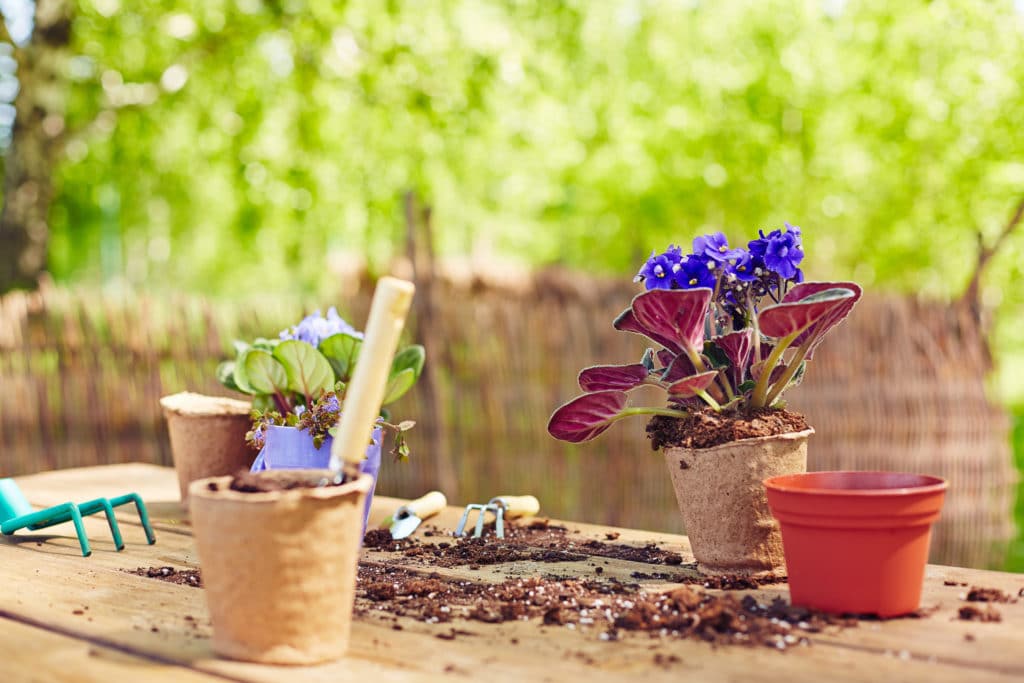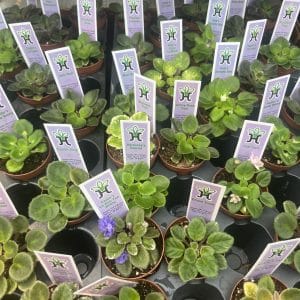
African Violet plants do best and flower more in bright indirect light, close to an east-facing window is ideal. When the light is too low, the leaves turn dark green, lose their plump appearance, and the plant produces very few flowers. The leaves turn a pale yellow-green and the flowers fade quickly when there is too much light.
Allow the top 1″- 2″ of soil to dry out before watering. Avoid using water that has passed through a softener or water containing chlorine or fluoride. Always water African Violet houseplants from the bottom to prevent water getting on the leaves. Remove any excess water that is still in the saucer after 15 minutes.
These plants do well in temperatures of 75°-80°F (23.9°-26.7C) during the day and about 10° cooler at night. Keep African Violet plants away from cold drafts and heating vents.
High humidity is preferable, but African Violets easily adapt to basic household humidity.
Quickly remove dead flowers and stems to encourage more flowers. Keeping the soil of African Violet houseplants on the dry side helps the plant bloom more often.
African Violets are bothered by spider mites and Mealy Bugs. are two Use a Qtip dipped in alcohol or Neem Oil to treat these insects as soon as they appear. Since the leaves of African Violet plants are easily damaged, only use commercial insecticides that are recommended for African Violets.
African Violets are susceptible to botrytis, powdery mildew, and erwinia blight. Preventing plants from getting diseases is much easier than treating diseases once they appear. Provide good air circulation and never get water on the leaves.
African Violets like a rich, airy, potting soil. Special African Violet soil is available at most garden centers. These plants should be re-potted every 6-12 months using fresh soil. This prevents unwanted salt from the fertilizer building up in the soil and burning the roots and leaves.
Keeping African Violets a little root-bound in a small pot encourages the plant to produce more flowers.
Remove 2-4 leaves from the bottom of an African Violet plant each month to encourage new leaf development at the top of the plant. Quickly and carefully remove any dead flowers and their stalks as soon as they appear.
African Violets are easily propagated by leaf cuttings during the spring. You’ll need a little patience. It may take up to three months for new leaves to develop.
African Violets are non- Poisonous Houseplants.

